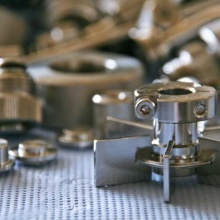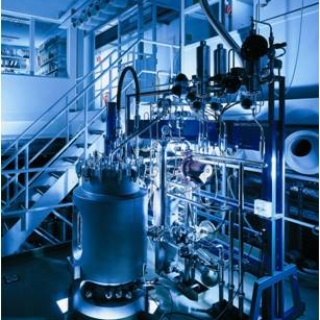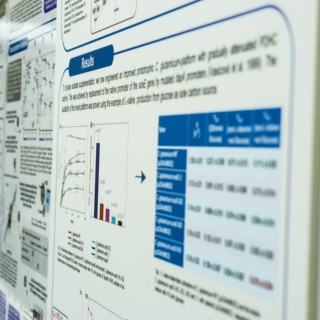Research activities focus on the development of strains and sustainable bioprocesses for the production of commodities, fine chemicals, materials, food additives, enzymes, biopharmaceutical components, and proteins. Bioproduction makes use of first, second, and third generation of substrates, namely carbohydrates, side- and residual process streams, and CO/CO2 containing offgas, respectively. Studies aim for the successful transfer from lab innovation to commercial production making explicit use of a profound, quantitative understanding of subcellular, cellular, and intercellular interactions. Activities consider isolated enzymes, cell free protein synthesis, microbial and mammalian cells. Examples are Escherichia coli, Pseudomonas putida, Corynebacterium glutamicum, Clostridium ljungdahlii, Vibrio natriegens, yeasts such Saccharomyces cerevisiae, and mammalian cells such as Chinese hamster
Research comprises the following core topics:
Microbial fermentation and cell culture: Ranging from microL to 300L bioreactor scale, multiple bioreactors for fermentation and for cell culture cultivation are available even comprising a dedicated lab for gas fermentation. Notably, IBVT offers multiple devices for mimicking large-scale mixing heterogeneities in so-called scale-down bioreactors. Related research aims to unravel characteristic stress conditions as a prerequisite for their prevention in large scale. The engineering perspective always guides research which asks for comprehensive on-, at- and off-line monitoring of the microbial and mammalian cultures. Data are used for thorough balancing as a basis of quantitative process and strain evaluation.
Cell free protein synthesis (CFPS) is studied applying multiple microorganisms such as E. coli and P. putida. Experimental CFPS studies are used to unravel details of cellular transcriptional and translational regulation to build the ground for data-based structured models. Additionally, CFPS is also investigated to produce products that may be toxic under in vivo conditions.
Metabolomics are typically applied to characterize cellular physiology and metabolism. Dedicated protocols for extra- and intracellular metabolomics have been developed and are steadily upgraded to quantify subcellular regulatory mechanisms. Multiple analytics are available in-house enabling the studies.
Transcript studies are frequently performed to qualify and quantify the mRNA mediated control inside cells. Whereas samples for transcript analysis are often measured by subcontractors, in-house software (R-code) supports the elucidation of underlying regulatory programs.
Cellular models are usually derived from the experimental data aiming to create cellular twins that are integrated into process models or into advanced design-build-test-learn cycles. Such structured models comprise stoichiometric metabolic approaches as well as ODE systems for embedding different time constants of multi-layered regulatory control.
Process models are applied to mimic real case bioprocess scenarios. Beside conventional ODE approaches, computational fluid dynamics are intensively studied for predicting large scale operating conditions through the eyes of the microbes. In essence, Reynolds-averaged-Navier-Stokes (RANS) approaches as well as Lattice-Boltzmann technologies are used, both applying commercial tools.
Strain engineering focuses on the creation of novel microbial chassis that show robust performance under large-scale conditions. Strain design is guided by experimental data and by cellular twins. Furthermore, cellular twins are integrated into advances design-build-test-learn cycles to ease and to automate strain engineering.




